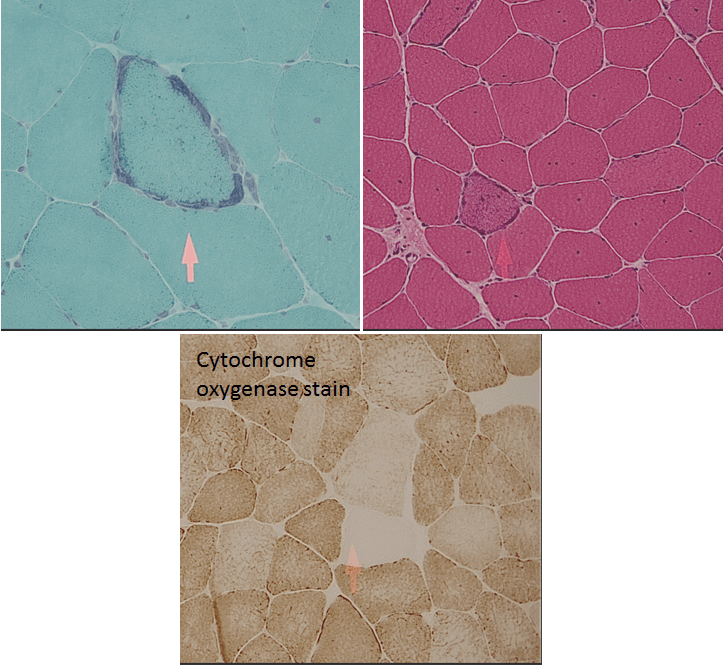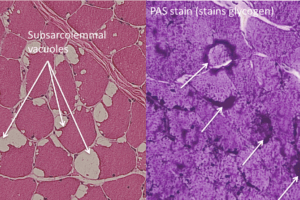
Mitochondrial myopathy can be caused by metabolic abnormalities related to mutations in the mitochondrial genome or mutations in the somatic genome that produce abnormal mitochondrial proteins.
Pathologic findings in mitochondrial myopathy
The classic findings of a mitochondrial myopathy on muscle biopsy are shown in the images below. These include:
- Ragged red fibers. This appearance is due to the accumulation of abnormal mitochondria around the periphery of muscle fibers. These are visible on both H&E stain and trichrome stain.
- Decreased or absent staining of the mitochondrial enzyme cytochrome oxidase.

The inheritance of mitochondrial disorders is non-Mendelian since some mitochondrial proteins are carried in the mitochondrial genome (maternal inheritance) but others are carried in the somatic genome (allowing for autosomal dominant or recessive inheritance, or sex-linked inheritance).
Moreover, expression of the abnormal proteins can be patchy if the mutation is mitochondrial. Since some of the mitochondria in a cell are normal and others are abnormal the extent of dysfunction in a cell lineage depends on how the abnormal mitochondria distribute during cell division. In siblings with the same mutation the effect can be wildly different.
The most common mitochondrial abnormalities share several features, including short stature, ophthalmoplegias, and myopathy, although in varying degrees. These disorders include:
- MELAS (Mitochondrial encephalomyopathy, lactic acidosis, and stroke-like syndrome).
- MERRF (Myoclonic epilepsy and ragged-red fibers).
- Kearns-Sayre syndrome (presents typically before age 20 with cardiac conduction abnormalities and hearing loss).
These mitochondrial myopathies are rare, estimated to have an overall prevalence of 1-2:10,000, although tis is is an order of magnitude more common that some myopathic disorders like McArdle’s disease.
Images courtesy of Dr. Lei Zhao, Dr. Jerry Wong, and Dr. Peter Pytel at the University of Chicago.
References
Mitochondrial myopathy (MM). NORD.



